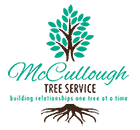By: Shelby McCullough| Published: July 2, 2024
Storms can leave behind a significant amount of debris and damage, making cleanup a daunting task. However, with the right approach and effective techniques, you can manage effective storm cleanup safely. Here are some comprehensive and detailed tips to help you tackle storm cleanup effectively.

1. Assess the Damage
After a storm, the first step is to assess the extent of the damage. This will help you determine the resources and equipment needed for cleanup.
- Safety First: Before inspecting the damage, ensure it is safe to go outside. Watch out for downed power lines, flooding, and unstable structures.
- Document the Damage: Take photos or videos of the damage for insurance claims.
- Check Trees and Branches: Look for broken or hanging branches that could pose a danger.
2. Prioritize Cleanup Tasks
Once you have assessed the damage, prioritize your cleanup tasks to address the most critical issues first.
- Remove Hazards: Start by removing debris that poses an immediate threat to safety, such as broken glass, sharp objects, and large branches.
- Clear Pathways: Ensure that driveways, walkways, and entryways are clear for safe access.
- Tackle Major Debris: Focus on large debris like fallen trees and heavy branches.

3. Gather the Right Tools and Equipment
Having the proper tools and equipment is essential for effective storm cleanup.
- Protective Gear: Wear gloves, safety goggles, and sturdy footwear to protect yourself from injuries.
- Basic Tools: Use rakes, shovels, and wheelbarrows to collect and transport debris.
- Power Tools: Chainsaws and pole saws can help with cutting larger branches and fallen trees.
4. Tree and Branch Removal
Removing fallen trees and branches requires careful handling to avoid further damage or injury.
- Professional Help: For large trees or branches, consider hiring a professional tree service like McCullough Tree Service to safely remove them.
- Cutting Branches: Use a chainsaw to cut large branches into manageable pieces.
- Stump Grinding: If a tree has been uprooted, consider stump grinding to remove the stump and prevent future issues.
5. Handling Hazardous Materials
Storms can cause hazardous materials like chemicals and asbestos to become exposed. Handle these materials with care.
- Identify Hazards: Look for containers of chemicals, fuel, and other hazardous materials.
- Proper Disposal: Contact local waste management services for proper disposal instructions.

6. Water Damage and Flooding
Water damage can lead to mold and structural issues if not addressed promptly.
- Drain Water: Use pumps or wet/dry vacuums to remove standing water from your property.
- Dry Out: Open windows and use fans and dehumidifiers to dry out affected areas.
- Mold Prevention: Clean and disinfect surfaces to prevent mold growth.
7. Yard and Garden Cleanup
Restoring your yard and garden is an important part of storm cleanup.
- Debris Removal: Collect and dispose of leaves, twigs, and other small debris.
- Plant Care: Prune damaged plants and trees to promote healthy regrowth.
- Soil and Mulch: Check for soil erosion and replenish mulch as needed.
8. Documentation and Insurance Claims
Proper documentation is crucial for insurance claims after storm damage.
- Detailed Records: Keep detailed records of all damage, including photos and videos.
- Receipts: Save receipts for any repairs and cleanup expenses.
- Insurance Contact: Contact your insurance company as soon as possible to start the claims process.

FAQs About Effective Storm Cleanup
Q1: What should I do first after a storm?
- Assess the damage and ensure it is safe to go outside. Document the damage for insurance purposes.
Q2: How can I safely remove large branches?
- Use a chainsaw to cut large branches into smaller pieces. Consider hiring a professional for very large or hazardous branches.
Q3: What tools are essential for storm cleanup?
- Essential tools include gloves, safety goggles, rakes, shovels, wheelbarrows, chainsaws, and pole saws.
Q4: How do I handle hazardous materials exposed by the storm?
- Identify any hazardous materials and contact local waste management services for proper disposal instructions.
Q5: How can I prevent mold after water damage?
- Use pumps or wet/dry vacuums to remove standing water, open windows, and use fans and dehumidifiers to dry out areas, and clean and disinfect surfaces.
Q6: What is the best way to document storm damage for insurance claims?
- Take detailed photos and videos of all damage, keep receipts for repairs and cleanup, and contact your insurance company promptly.
Q7: How can I restore my garden after a storm?
- Remove debris, prune damaged plants, check for soil erosion, and replenish mulch as needed.
Conclusion
Effective storm cleanup requires a systematic approach, the right tools, and attention to safety. By following these tips, you can manage the aftermath of a storm efficiently and restore your property to its original state. Remember, when in doubt, seek professional help to ensure the job is done safely and thoroughly. McCullough Tree Service is here to assist with all your storm cleanup needs, providing expert services to help you recover quickly and safely.

